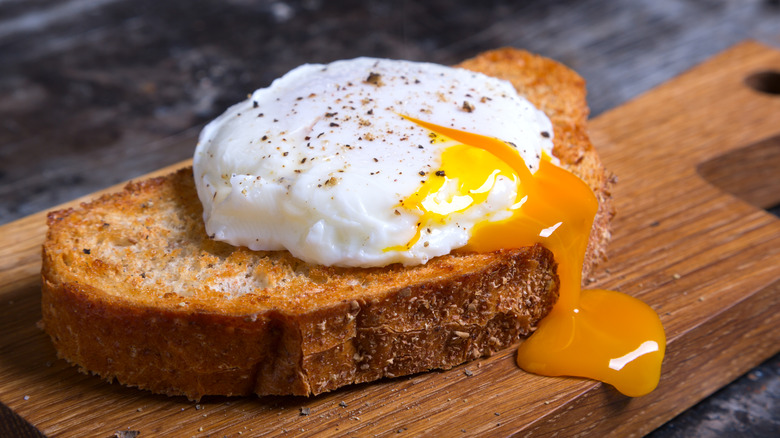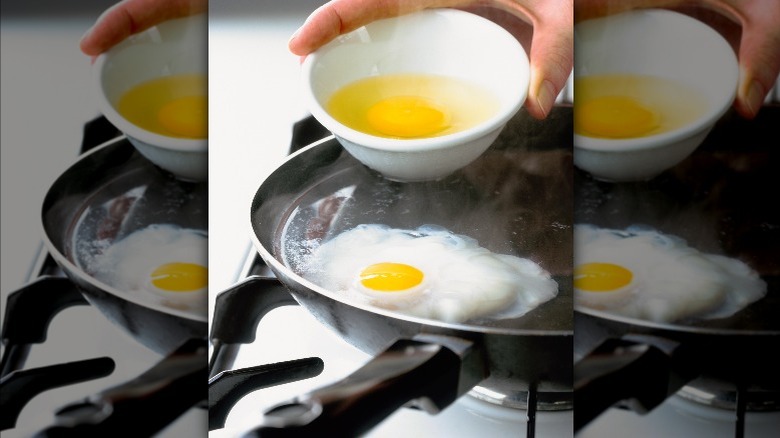When Poaching Eggs, Prepping The Water Is Key – Here's Why
Poaching eggs is a coveted kitchen skill, but once you discover the strategy behind the magic, they're sure to be part of your regular breakfast rotation. In addition to selecting high-quality, fresh eggs to poach, the water makes all the difference. Properly brewing up the water is essential when poaching eggs because it ensures a beautifully set, firm white and a runny yolk. Nelson Serrano-Bahri, chef and director of innovation at the American Egg Board, explained to Mashed that carefully preparing the water reduces the risk of the egg white dispersing in the pan, allowing you to make the best poached egg every time.
The process begins with a crucial step: bringing the water to the right temperature. According to chef Serrano-Bahri, the water should simmer around 180 to 190 F. This range is hot enough to cook the egg gently but not so vigorously that it disturbs the delicate egg as it poaches. People make many mistakes when poaching eggs, including using old eggs, opting for too shallow of a skillet, and keeping the water at a rolling boil. If the water is boiling, the turbulence can break up the whites, leaving you with a scattered, uneven poach. Ideally, "you should only see minor bubbles at the surface, if any," chef Serrano-Bahri shared.
Draw the perfect bath for your poached eggs
Chef Nelson Serrano-Bahri suggests adding a dash of salt to the water to give the egg a slight seasoning. However, the real secret to poached eggs is "a small amount of vinegar — around 1 tablespoon per cup of water." Vinegar helps the proteins in the egg whites coagulate faster, keeping them close to the yolk and helping form a neat, compact shape. The acidic liquid also creates a protective barrier around the yolk, ensuring it remains soft and intact as the egg cooks.
The final step is to add the eggs to the pot once the water reaches 180 to 190 F. The eggs should be cracked into a saucer or custard bowl, then slipped — not dropped — into the water. This tried-and-true technique reduces the risk of breaking the yolk once it hits the surface and swims for 3 to 5 minutes.
Once you've become a master egg poacher, you can enjoy the fluffy, creamy, protein-packed delights in several ways. For instance, pair poached eggs with English muffins, ham, and a generous drizzle of hollandaise sauce for a classic Eggs Benedict recipe. Poached eggs also work for lunch or dinner fare. Plop a poached egg into a simple salad or a warm grain bowl with quinoa, roasted vegetables, and tahini dressing. Whatever the meal, poached eggs can elevate any dish to new levels of elegance with their tender, flavorful finish.

